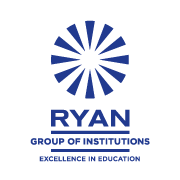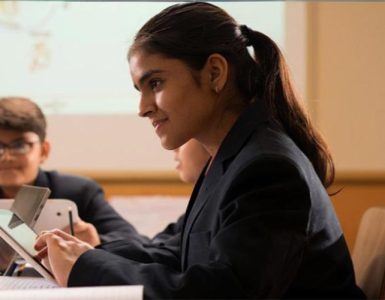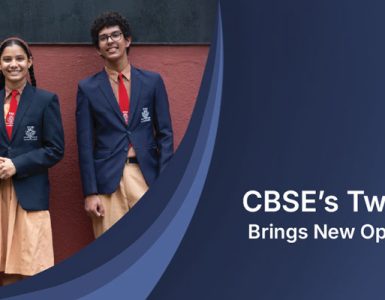As we stand on the threshold of a future teeming with possibilities, one thing is clear – our children will not only navigate this future but shape it. This realization prompts us to redefine learning, moving beyond the acquisition of facts to the cultivation of intellectual agility and creativity.
Picture classrooms buzzing with curiosity, where questions and ideas fly around like fireflies, sparking joy and enlightenment. Think of lessons steeped in real-world scenarios, where abstract concepts transform into tangible applications. Imagine students collaborating to explore ideas, each conversation and shared task becoming a catalyst for deeper understanding and innovation. This is the essence of the learning ecosystem we need to create.
In this reimagined landscape, technology is our ally, enhancing the learning experience with interactive platforms, immersive virtual environments, and intelligent learning systems. Amid digital engagement, educators are the anchors, steering the ship towards the shores of independent thinking and creative problem-solving.
Parents and society, too, have critical roles in this journey. From encouraging inquiry during dinner conversations to providing enriching experiences in local communities, every moment can be an opportunity for intellectual growth.
Our children deserve an education that goes beyond academics, one that weaves empathy, self-awareness, and emotional intelligence into the fabric of learning. As they grow to understand themselves and others better, they become better learners, more effective collaborators, and compassionate leaders.
Assessments, too, need a fresh perspective. It’s not just about what our children know but how they think. Insights from these assessments would guide educators in personalizing teaching strategies and help students understand their learning styles better.
As we move forward, we need to remember that our responsibility doesn’t stop at instilling intellectual agility and creativity. We need to guide our young learners to think ethically, and to understand that every innovation comes with a responsibility towards society and the environment.
This transformative journey is not a one-time event, but a continuous process that fuels the love for lifelong learning. It’s about nurturing a flame of curiosity and creativity that continues to glow, guiding our children through life’s intricacies and surprises.
Weaving diversity, art, and STEM into the learning process can further amplify intellectual agility and creativity. By fostering an appreciation for diverse cultures and ideas, encouraging creative expressions, and providing engaging hands-on STEM experiences, we prepare our children for the global stage.
This metamorphosis in education isn’t just a transformation; it’s an evolution of what it means to learn. It’s a collective endeavour that calls upon every educator, parent, and member of society to participate actively.
As we gaze into the future of education, a question stands paramount – How do we realize this vision of nurturing cognitive flexibility and innovative thinking in our children? It is an ambitious goal, but achievable. It calls for a revolution in our pedagogy, a reimagining of how we approach learning and teaching. In this section, we delve into strategies and potential solutions that offer fresh perspectives on achieving this transformative vision. Let’s embark on this journey, discovering how we can unlock the full cognitive and creative potential of our young learners.
A Paradigm Shift in Pedagogy
Achieving this transformative vision calls for a paradigm shift in pedagogy, replacing rote learning with experiential and project-based learning. In this model, students engage with the content, experimenting, creating, failing, and succeeding, all in the pursuit of knowledge. This shift fosters a deeper understanding of concepts and develops the skills necessary to apply this knowledge in novel ways.
Harnessing Technology: AI in Education
Artificial Intelligence has opened unprecedented opportunities in personalized learning. With the power of AI on our side, we can delve deep into the individual learning journeys of each student. Imagine having a tool that can closely follow a student’s progress, spot the areas where they’re struggling, and adapt the learning material to suit their unique way of understanding. This is what integrating AI into education can do for us. It ensures no child is left behind and that each student’s learning potential is amplified.
Cultivating a Growth Mindset
Promoting a growth mindset – the belief that intelligence and abilities can be developed through dedication and hard work – can boost resilience and foster a love of learning. By praising effort over outcome, and viewing mistakes as opportunities for learning, we can nurture these skills
Emphasizing Social-Emotional Learning
It is just about understanding oneself, it is about fostering empathy, allowing students to step into others’ shoes, to feel their joys and pains, and to form bonds that are rooted in understanding and compassion. This emotional toolkit also enables them to build strong, positive relationships that enrich their lives and the lives of those around them.
But it doesn’t stop there. SEL programs also help students make responsible decisions, weighing the impacts on themselves and others, and choosing the right path, which is not always the easy one. An emotionally intelligent student, equipped with these skills, is better prepared to face life’s challenges and contribute meaningfully to their communities. They are not just learners in this setting; they are empathetic friends, responsible decision-makers, and positive contributors, ready to make their mark on the world.
Role of Design Thinking in Education
Design Thinking is a creative problem-solving approach that encourages empathy, experimentation, and iteration. Integrating design thinking into the curriculum can inspire students to empathize with real-world problems, ideate solutions, create prototypes, and iterate based on feedback. This process not only cultivates problem-solving skills but also fosters empathy and collaboration.
A Collective Endeavor
We’re all part of a significant process to redefine education. This process involves continuous improvement and adjustment, and its goal is to help our children reach their full potential.
This effort isn’t just about preparing our children for the future—it’s about empowering them to create it. We want to foster thinkers, problem solvers, innovators, and leaders, not just traditional learners.
Our role is to provide an education that supports and nurtures their potential. We must go beyond teaching facts—we need to inspire them, build their confidence, and help them believe in their abilities.
To succeed, we must work together and focus on building a modern, robust education system. This system should enable every child to use their intellectual and creative potential to their fullest. In doing so, our children will be better equipped to shape the future rather than simply adapting to it.




